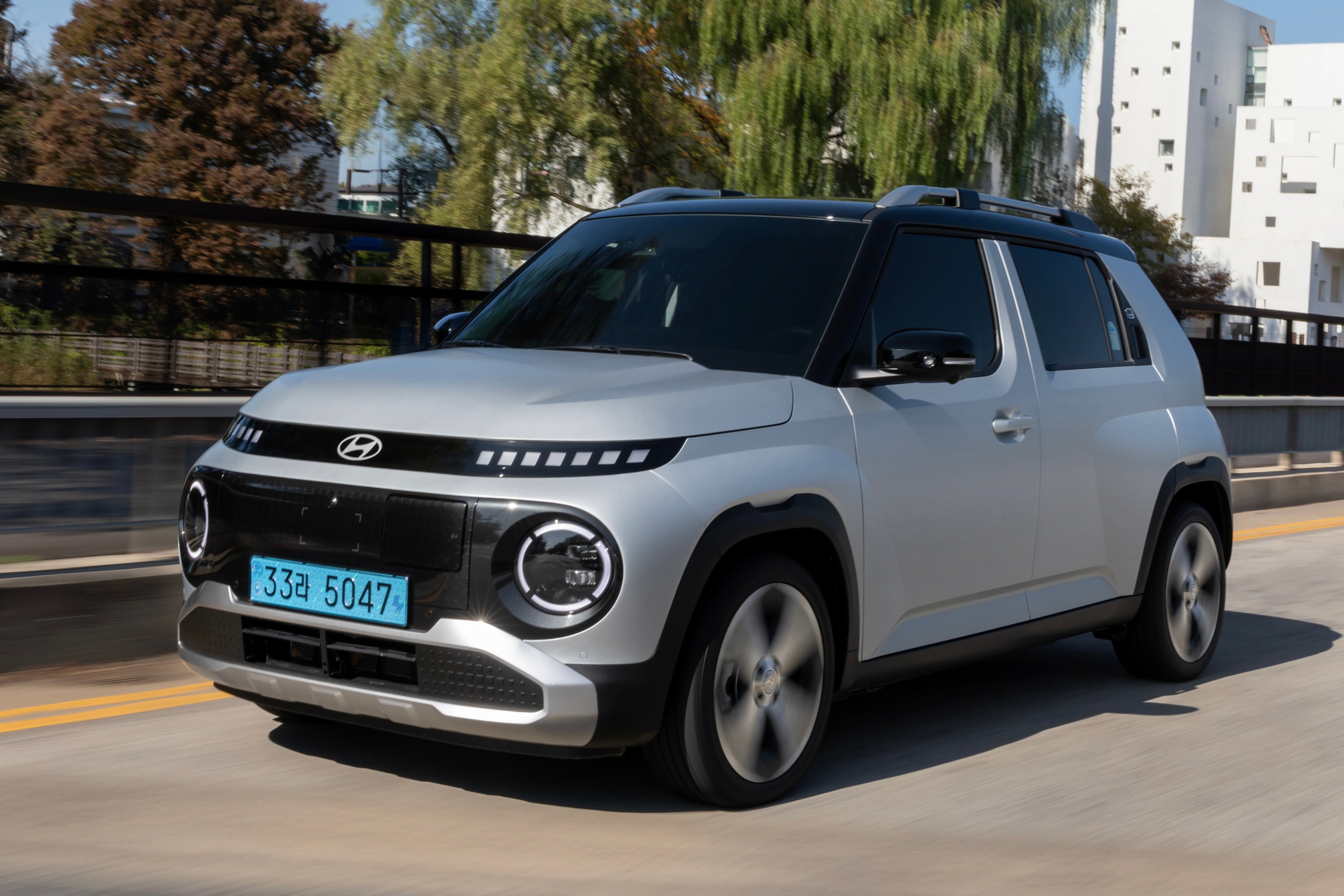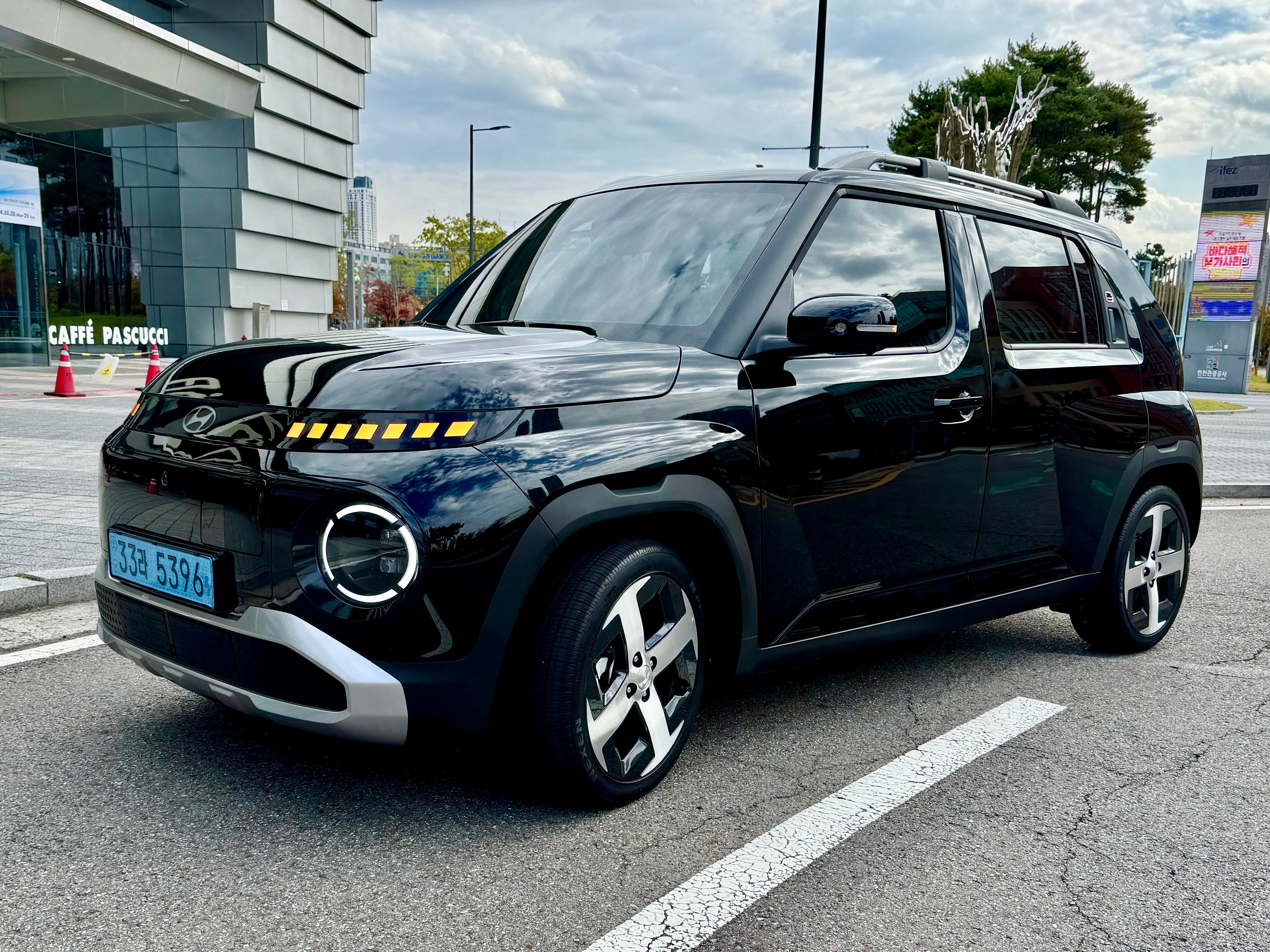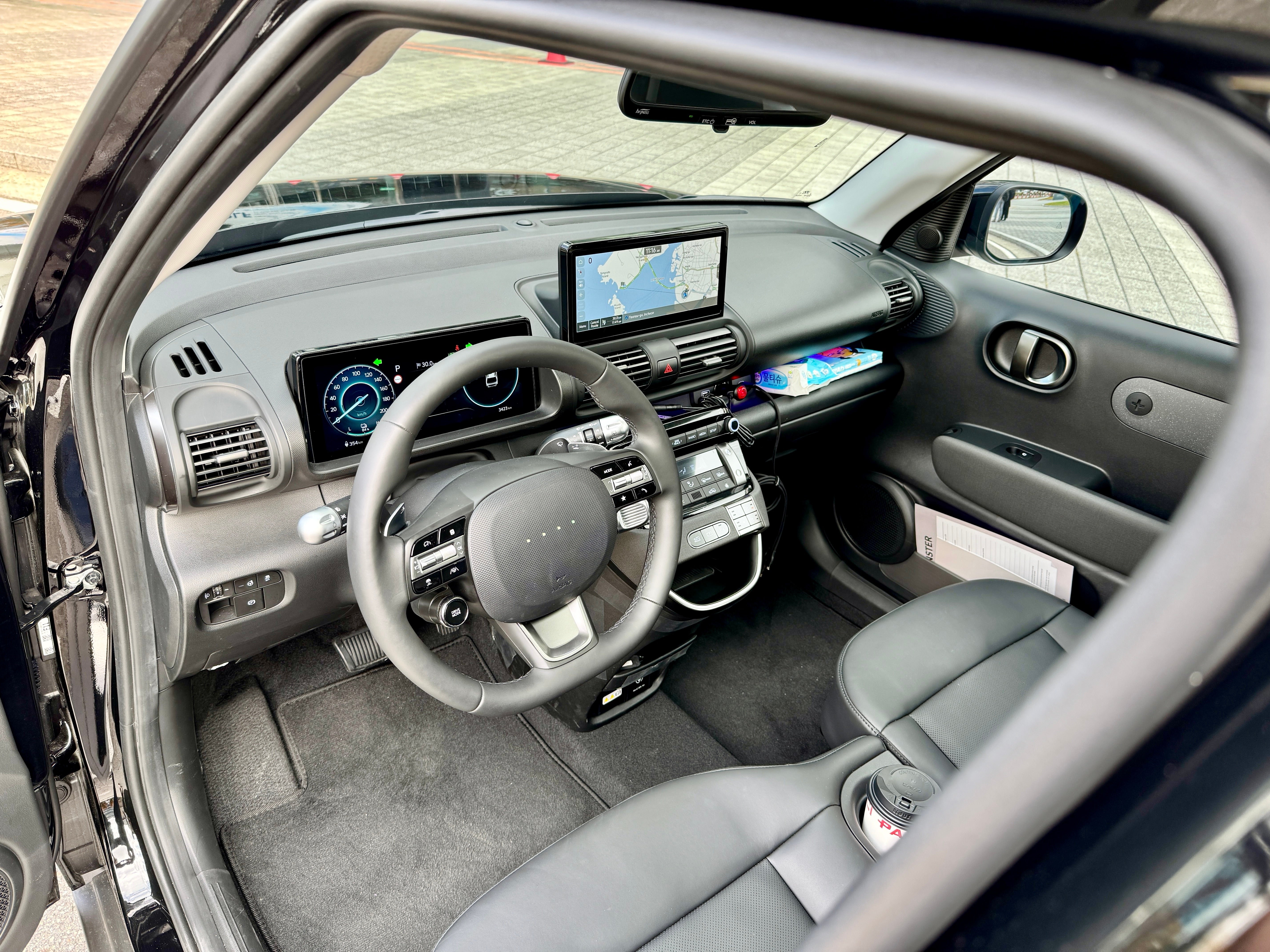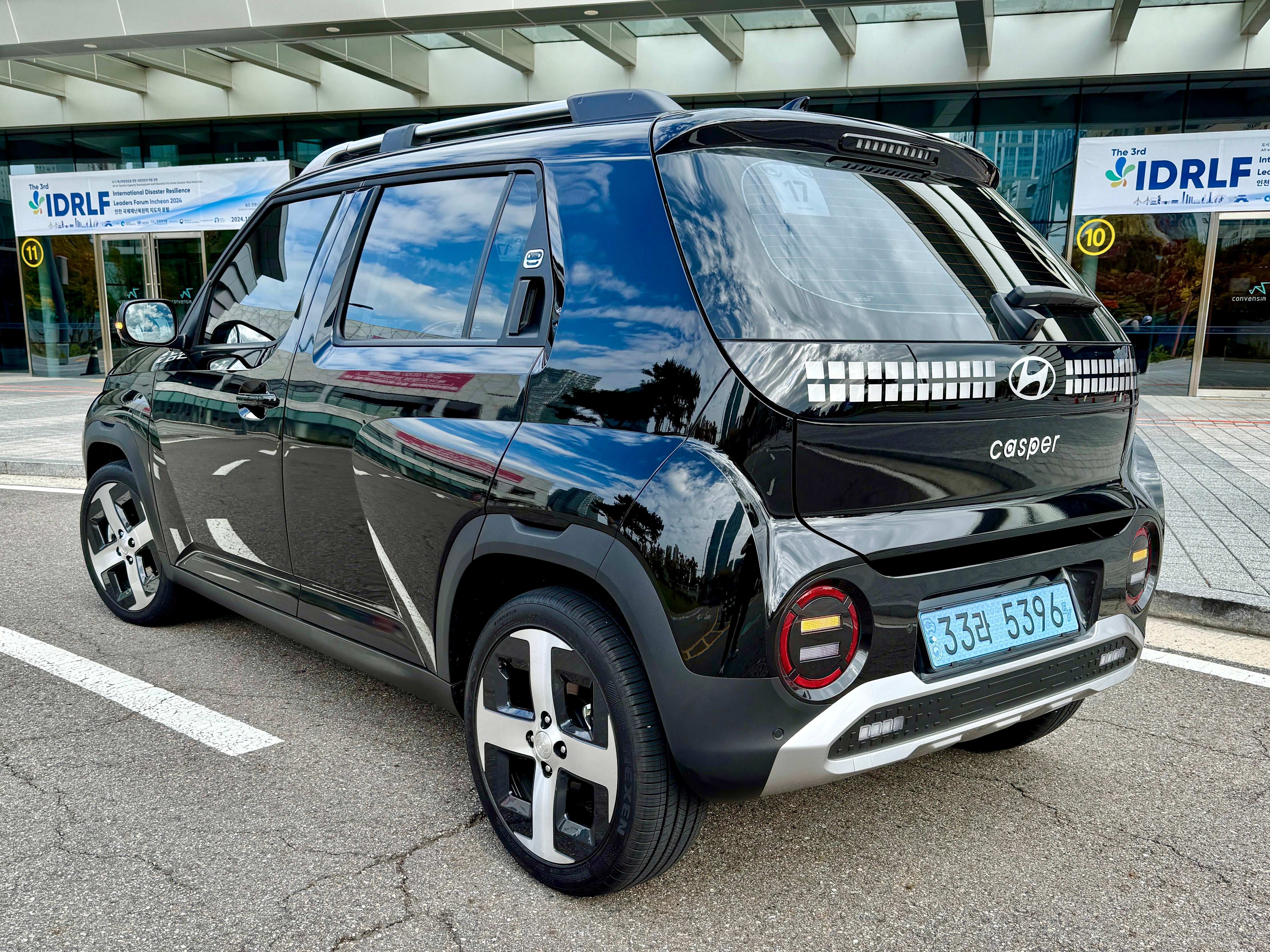Hyundai Inster EV review: cute mini-SUV is packed with kit but pricey
Hyundai’s entry-level model is a cute all-electric mini-SUV to compete against the likes of the Renault 5. It boasts an impressive array of tech, but it’s not as cheap as we had hoped

The Independent's Electric Vehicles Channel is sponsored by E.ON Next.
Hyundai hopes that its new electric Inster baby SUV will do for it what MINI has done for BMW, the 500 has done for Fiat and the new 5 is doing for Renault – it could become a brand in itself. It has the slightly cuter Hyundai Casper name in its home market, where it’s also available with a petrol engine, but for us it’s only an EV with two batteries and a starting price of £23,495.
And therein lies the problem. In a world where the new Renault 5 EV will have a slightly cheaper starting price and you have an all-electric Dacia Spring that you can’t spend more than £17,645 on including metallic paint, the Inster looks expensive.
Hyundai will counter with a tech count that’s more at home in a premium car – and the car does come with essential EV kit like a battery heater and heat pump to boost efficiency in cold weather – but the UK equivalent of the luxuriously kitted-out Inster we drove would set you back £26,745 plus a little bit more for one of the fancier paint options.
Given the Inster’s dinky dimensions, there’s a surprising amount of space in the back, while the tall shape means there’s loads of headroom. You can even fold all of the seats down – including the drivers – stick a blow-up mattress in there and spend the night, there’s enough room.
However, the Inster EV is narrow – we found our shoulder rubbing up against the door pillar and our passenger sitting slightly closer than we might expect.
Out on the road, the little Inster holds its own – it can keep pace with motorway traffic and, in true EV fashion, isn’t too noisy, while it was comfortable over our test route on some pretty rotten road surfaces.
Cute and well-equipped though it is, we just can’t get past those high prices – you can get a much bigger and still nicely equipped all-electric MG 4 or BYD Dolphin for about the same cash as a top-spec Inster.
How we test
Our first drive of the Inster EV came in the car’s home market, South Korea, where it’s actually badged Hyundai Casper. However, we replicated the sort of usage UK buyers will do with lots of city and town driving, mixed with a bit of high-speed motorway work.
Hyundai Inster: From £23,495, Hyundai.com

Independent rating: 7/10
- Pros: Impressive kit list, loads of rear space, drives nicely
- Cons: Too expensive, narrow cabin
- Price range: £23,495 to £26,745
- Battery size: 42 & 49kWh
- Range: 223 miles
- Miles per kWh: 4.3
- Maximum charge rate: 85kW
- Charging cost per 100 miles on E.ON Next Drive: £1.54
Battery, range, charging and performance
The cheapest Inster 01 comes with a 42kWh battery, while the 01 and lavishly kitted-out 02 models can be had with a 49kWh battery. There’s not a huge amount in it between the batteries; the smaller one gets a maximum claimed range of 203 miles, the larger one claims 223 miles.
Acceleration isn’t that different, either – neither car is speedy, nor do they need to be. The 42kWh battery gets from 0-62mph in 11.7 seconds and the 49kWh car does that in 10.6 seconds.
The 49kWh battery has a slightly higher fast charging speed at 85kW, the 42kWh battery will charge at a maximum of 73kW so not much to split the two there, either.
Our car with the bigger battery was enjoyable to drive around town with a good view out and a comfortable ride over the bumps – impressive given the car’s short wheelbase. It could hold its own on the motorway, too, while its efficiency impressed wherever you were driving – we suspect those range claims should be fairly realistic.
Interior, practicality and boot space
There are surprises and disappointments inside. Fold all the seats down – including the drivers – and you could turn the Inster EV into a makeshift bedroom! And you’re unlikely to have anyone complaining about leg and headroom in the back, either – it feels pretty cavernous in the rear, with a good view out through deep windows.
We did notice something unusual up front, though. The Inster is narrower than many of its rivals so you sit very close to the side of the car; broader folk may well find themselves resting their shoulder against the door pillar which feels a bit odd these days. The door bins are laughably slim, too, although there is reasonable storage elsewhere in the cabin including a useful ledge in front of the passenger.
And much as the kit count is impressively high inside, the quality isn’t and the dash design – despite two 10.25-inch digital displays for driver info and infotainment – looks a little dated, not helped by the hard plastics.
The boot offers a reasonable 238 litres of space – ideal for a few squashy bags – while moving the rear seats forward can release up to 351 litres of room in the boot.

Technology, stereo and infotainment
Who’d have thought such a small car would get adaptive cruise control (not that many Insters will spend their time on the motorway where it would be used most), climate control, two crisp and decently sized screens up front, LED headlights, privacy glass, 360 degree parking camera, heated seats and steering wheel and keyless entry and start.
There’s also wireless smartphone charging, which we always find a little odd when you have to use a wired connection to get Apple CarPlay or Android Auto, which then also charges your phone up!
The cluster of sensors you can see behind the rear-view mirror reveal the sheer number of advanced driver assistance features you get including that adaptive cruise control, lane keeping assistance and the like, while sensors will automatically put the lights or wipers on for you, too.
The audio system on our car wasn’t especially impressive, though, but will probably do for most people on shorter journeys.
Prices and running costs
Surrounded by all-electric budget car rivals from the Dacia Spring and Leapmotor T03 at the cheaper end of the city car market, to Renault 5 EVs and bigger electric MG 4s and BYD Dolphins, the Inster EV looks expensive with its £23,495 starting price. It feels like a car that should be a couple of grand cheaper, even if that meant doing without some of the more advanced technology.
There is still lots to like about the Inster, though, not least its efficiency – we were impressed by how little battery energy had been used over our mixed road test route, so running costs should be super-cheap. And, of course, you get the reassurance of Hyundai’s impressive five-year warranty, too.

Hyundai Inster’s electric car rivals:
FAQs
How much does the Hyundai Inster EV cost and is it worth it?
The price is the biggest issue we have with the Inster. In kit terms it offers lots for the money, but with a starting price of £23,495 it’s up against some seriously impressive rivals that feel more grown up on the road.
How long does it take to charge?
For such a small car, charging speeds are reasonably impressive with the 49kWh battery model getting a slightly higher fast charging speed at 85kW, the 42kWh battery will charge at a maximum of 73kW. That means both will do a 10 to 80 per cent charge in around 30 minutes on a suitable fast charger.
Does Hyundai replace batteries for free?
Hyundai offers an eight-year, 100,000-mile warranty on the battery and – as long as the car has been properly maintained in that time – will repair or replace batteries with any issues.
The verdict: Hyundai Inster EV
The Inster is an electric car you’ll want to love due to its cute 4x4-ish looks and the generous kit count on board. Despite the huge amount of rear head and leg room, the cabin is narrow, though, but the biggest problem is the price – you can get better cars for less, even if they might have less kit.
Join our commenting forum
Join thought-provoking conversations, follow other Independent readers and see their replies
Comments